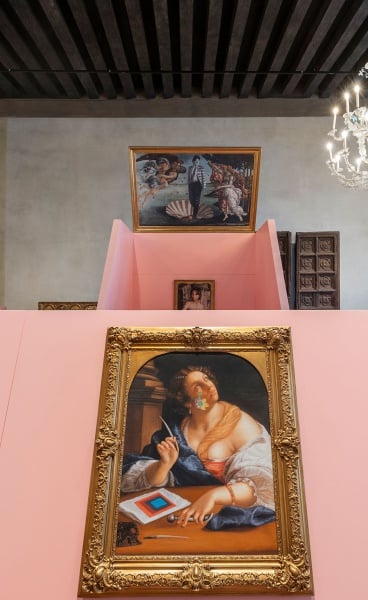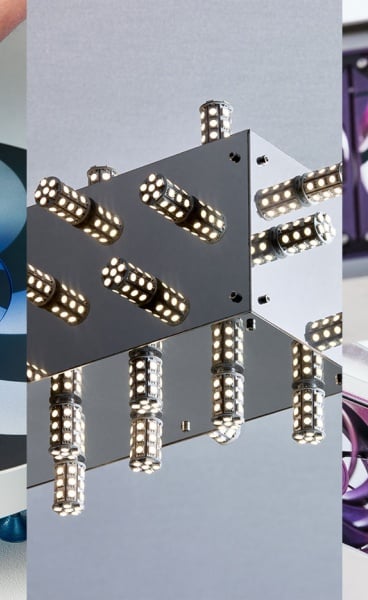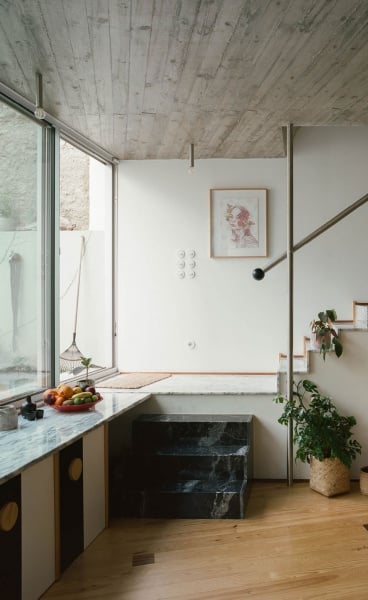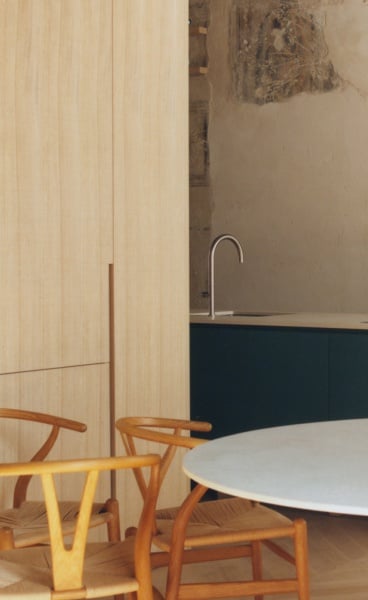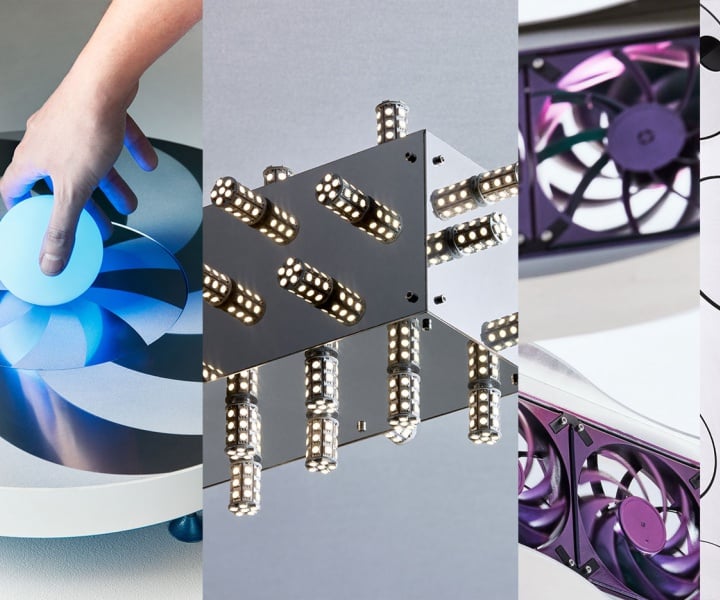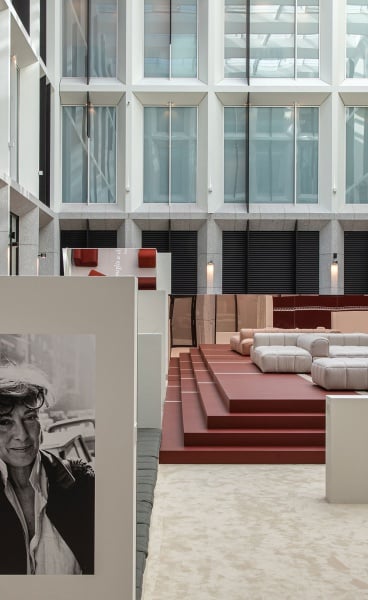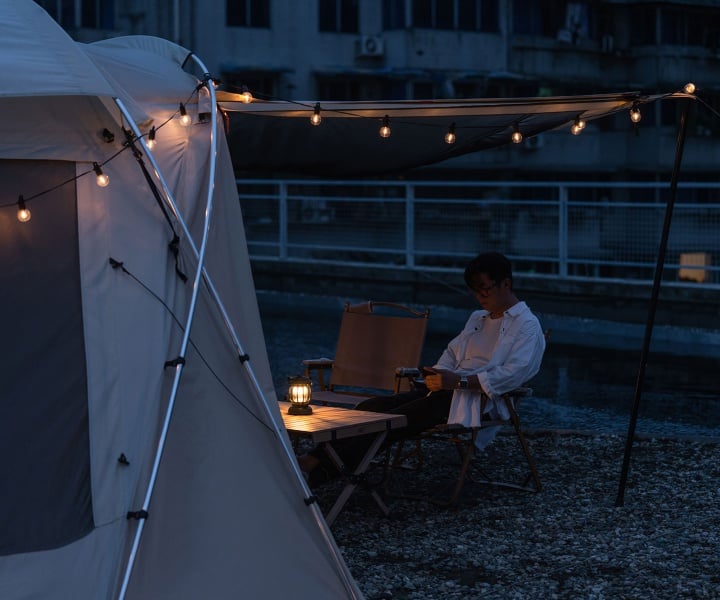Project Name
MONOARCHI Office RenovetionPosted in
Interior DesignLocation
Area (sqm)
90Completed
May 2018| Detailed Information | |||||
|---|---|---|---|---|---|
| Project Name | MONOARCHI Office Renovetion | Posted in | Interior Design | Location |
Shanghai
China |
| Area (sqm) | 90 | Completed | May 2018 | ||
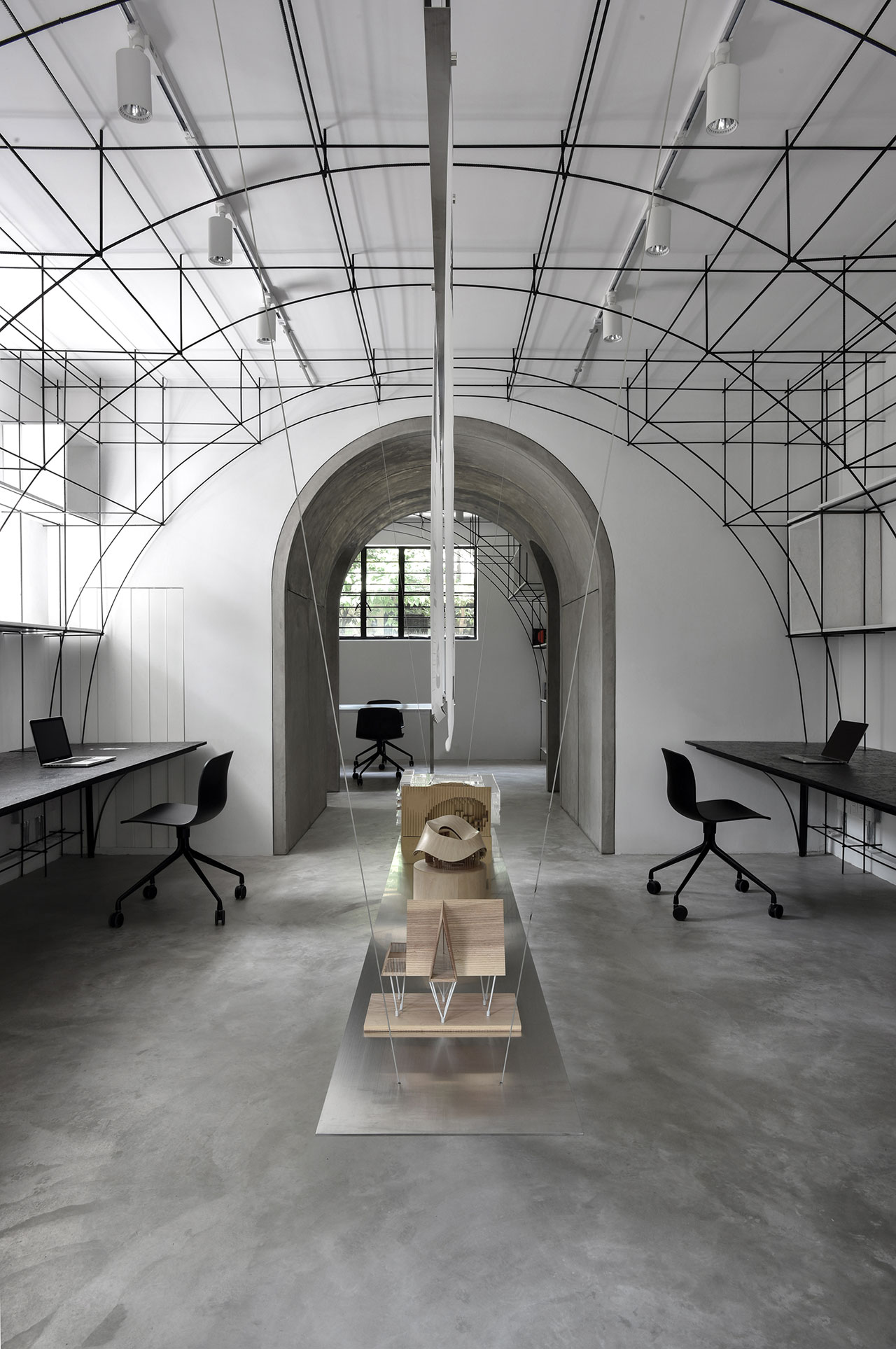
The main office area and the exhibition table. Photo by Song Xiaodan.
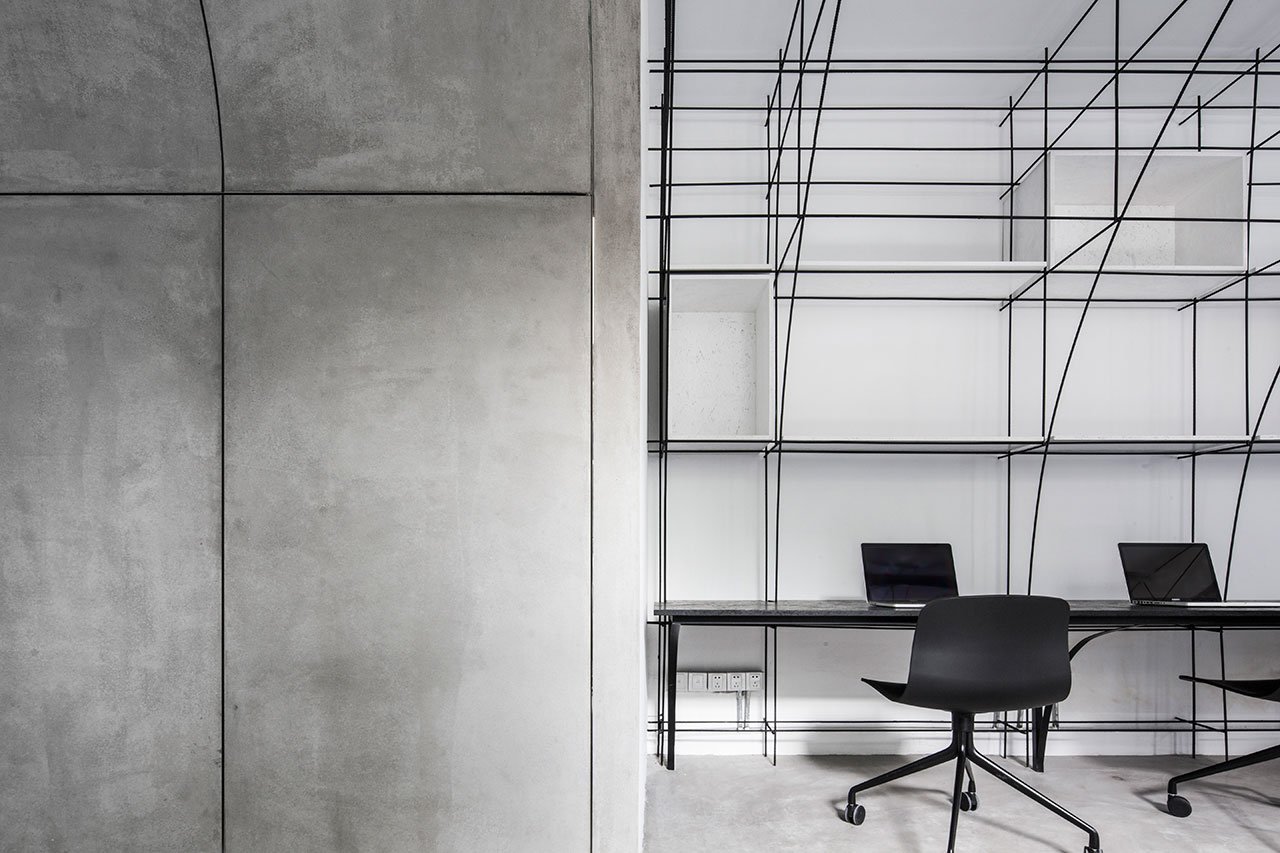
Critique archway. Photo by Qiu Ripei.
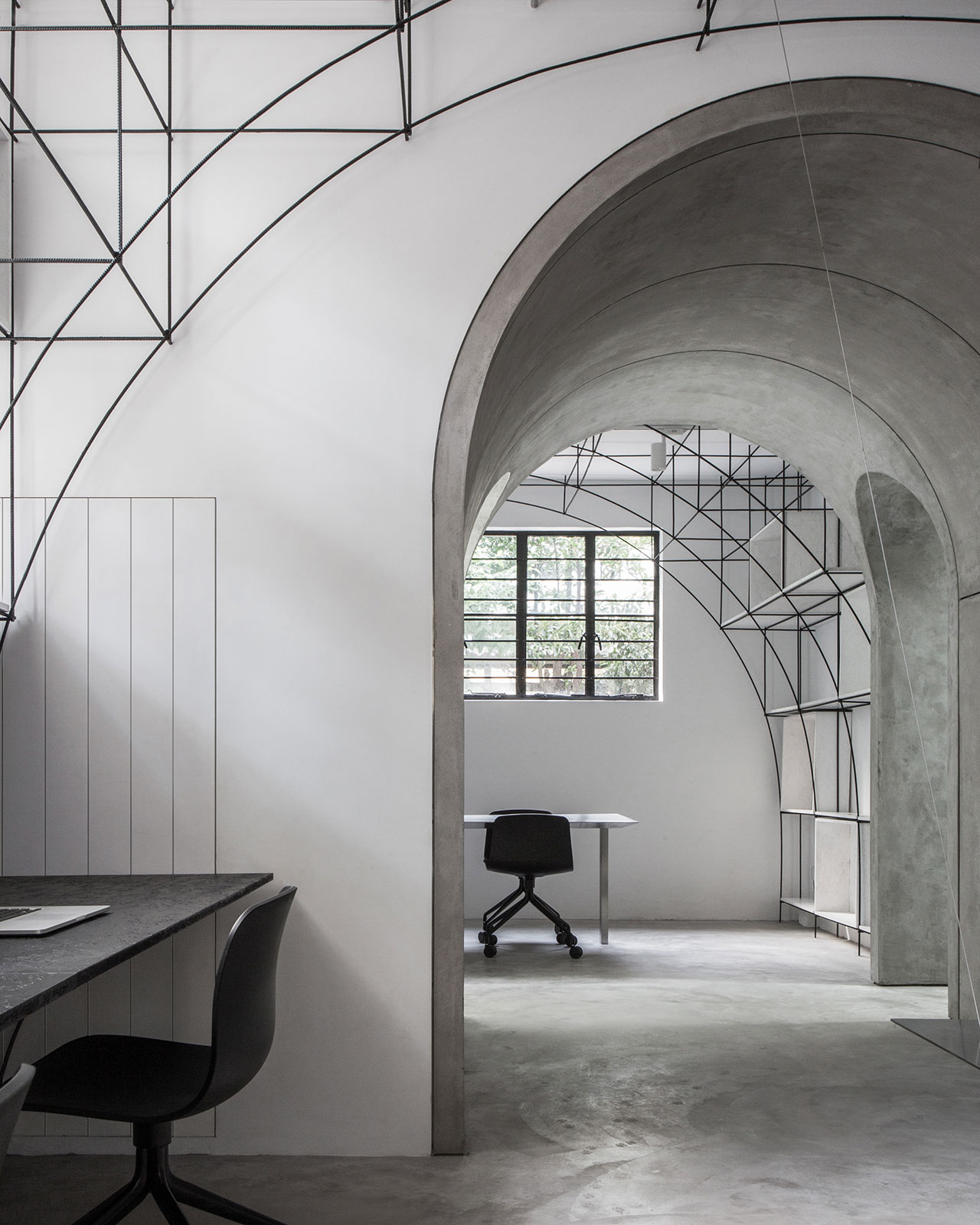
Photo by Qiu Ripei.

Arched door between the meeting room and the model room. Photo by Qiu Ripei.
Faced with a limited area of 100 square metres which had to accommodate 8 employees along with the desire not to alter the existing layout of the three rooms out of respect for the building’s history, the architects came up with a compact layout of hybrid functions: the main working space doubles as an exhibition space, the meeting room also houses a small library, and the third space functions as a model workshop, a material room and a printing room. Meanwhile, a connecting passageway is used as critique gallery.
In order to maximize the available space and enhance a sense of spaciousness, the house was stripped of all residential functions and inbuilt furniture, while the use of the arch motif in larger and smaller scales, and in solid and diagrammatic configurations, elegantly creates a sense of sculptural cohesion. In the main office room an intangible vault made from steel bars seems to have been drawn in-situ. The vault accentuates the main longitudinal axis of the office, as well as serves as storage space, and leads, via a vaulted corridor, to the meeting room which also features an arched steel structure.

Arched door between the meeting room and the model room. Photo by Qiu Ripei.
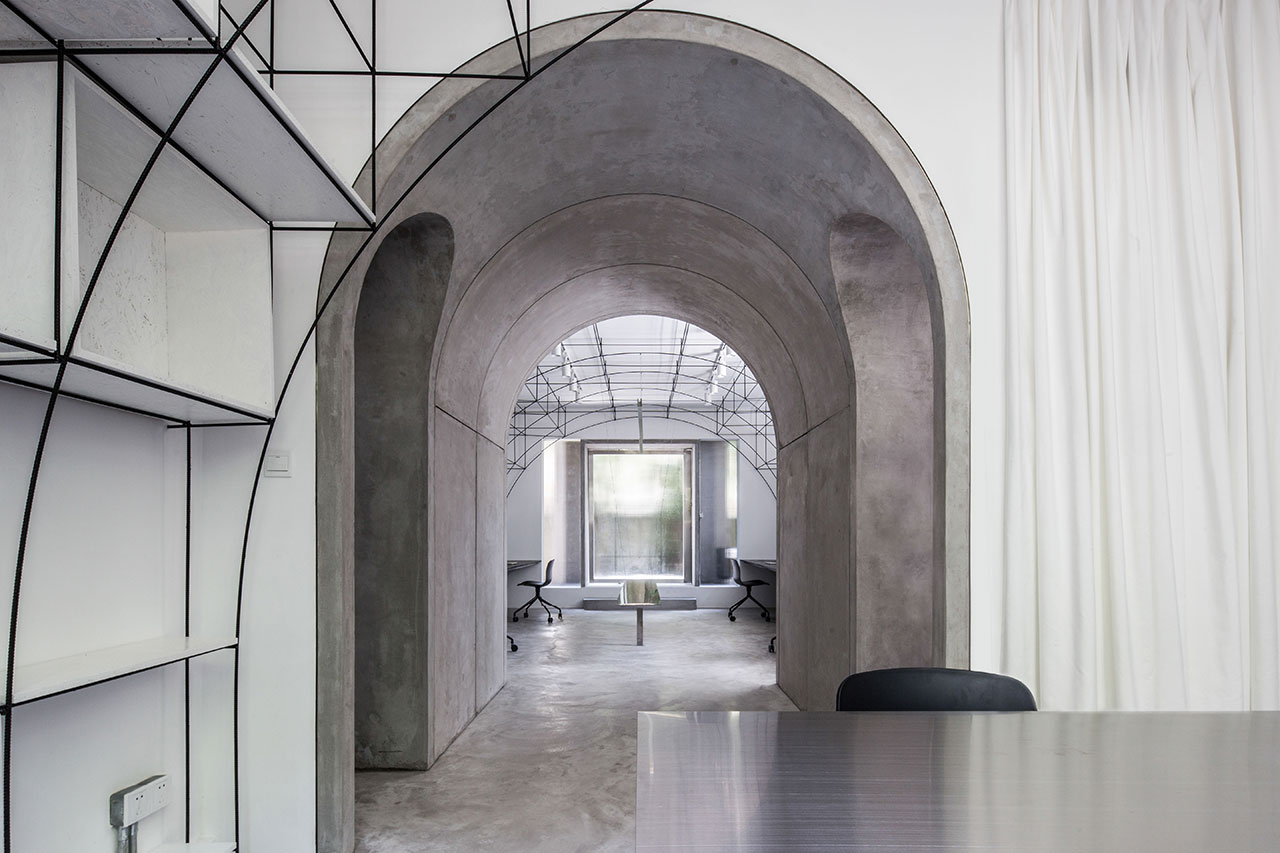
Axis through the meeting room, the archway and the main office. Photo by Qiu Ripei.

The arched door towards the model room. Photo by Qiu Ripei.
The use of steel rods, which traditionally function as reinforcement for concrete structures, poetically complements the cement floors and vaulted corridor-cum-gallery, creating a spatial dialogue between tangible and intangible volumes. Meanwhile, a floating tabletop of brushed stainless steel in the middle of the main workspace serves as a compact exhibition area in conjunction with a suspended stainless steel strip that drawings can hang from with the help of magnets.
At the front of the building, the introduction of a raised metal mesh platform preserves the courtyard’s original grassed paving and creates a communal space where residents from the first and second floor apartments are welcome to hang out. The use of frosted glass for the office’s elegant revolving front door, ensures privacy but also draws a fine line between interior and exterior, further reflecting how MONOARCHI’s design gracefully tiptoes between the contemporary and the historic
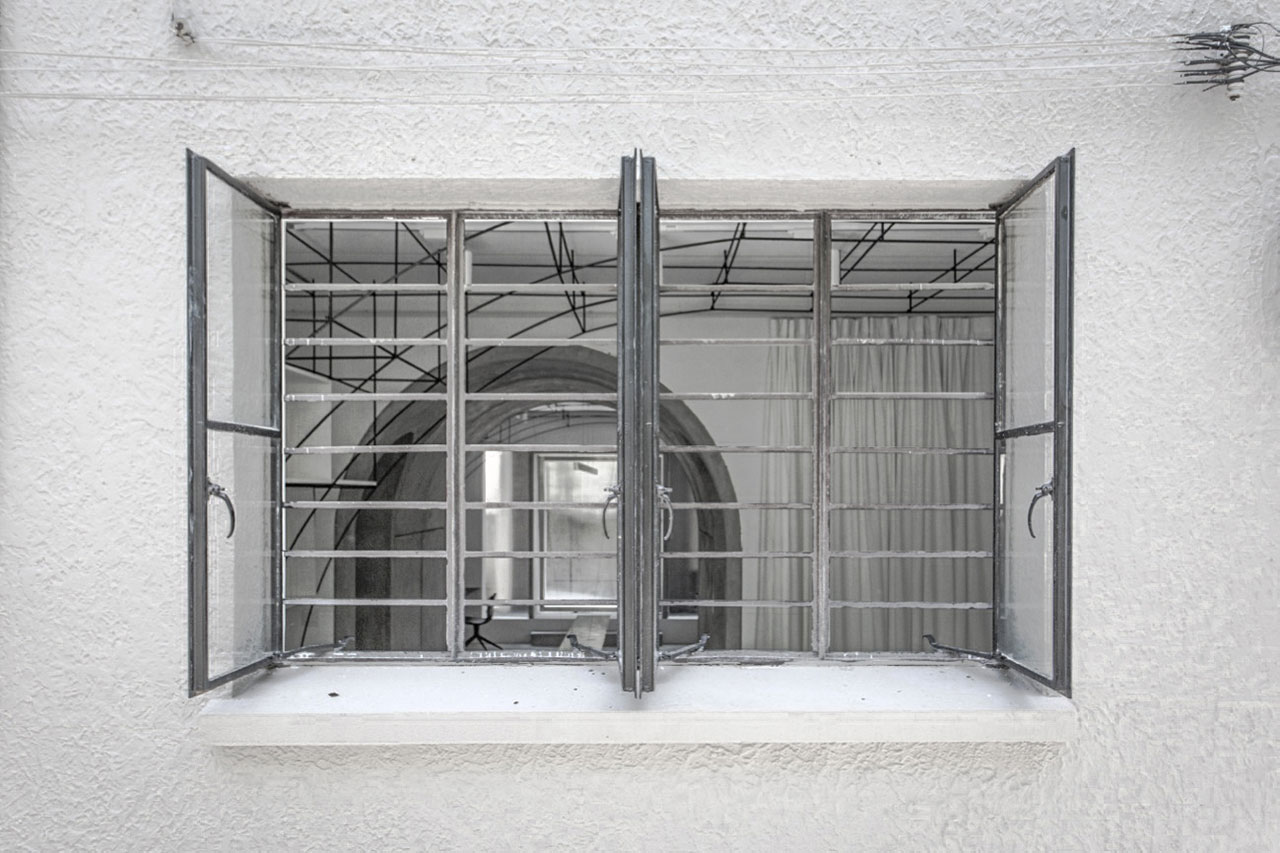
Rear window. Photo by Qiu Ripei.
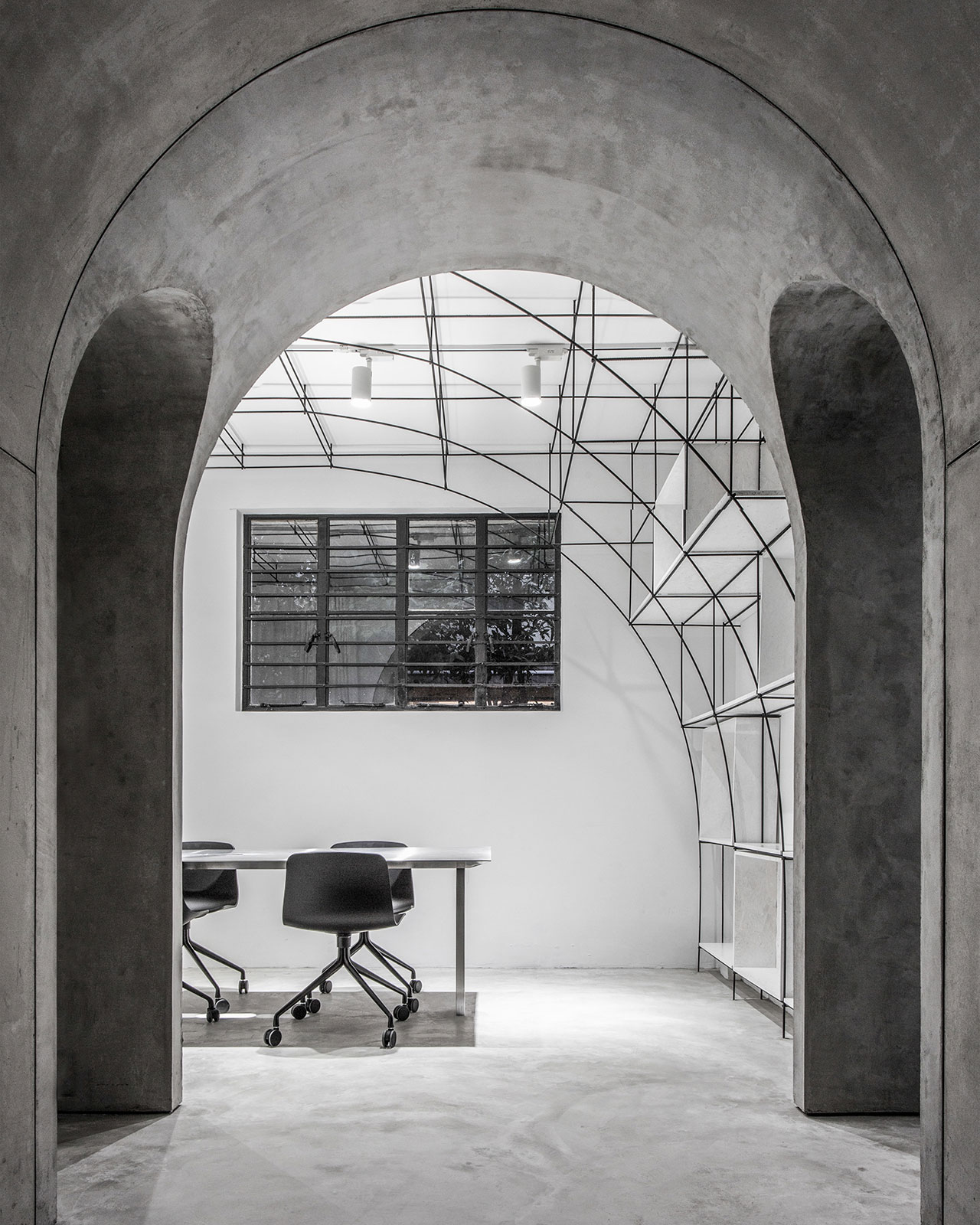
The office at night. Photo by Qiu Ripei.

The main office area and the exhibition table. Photo by Song Xiaodan.
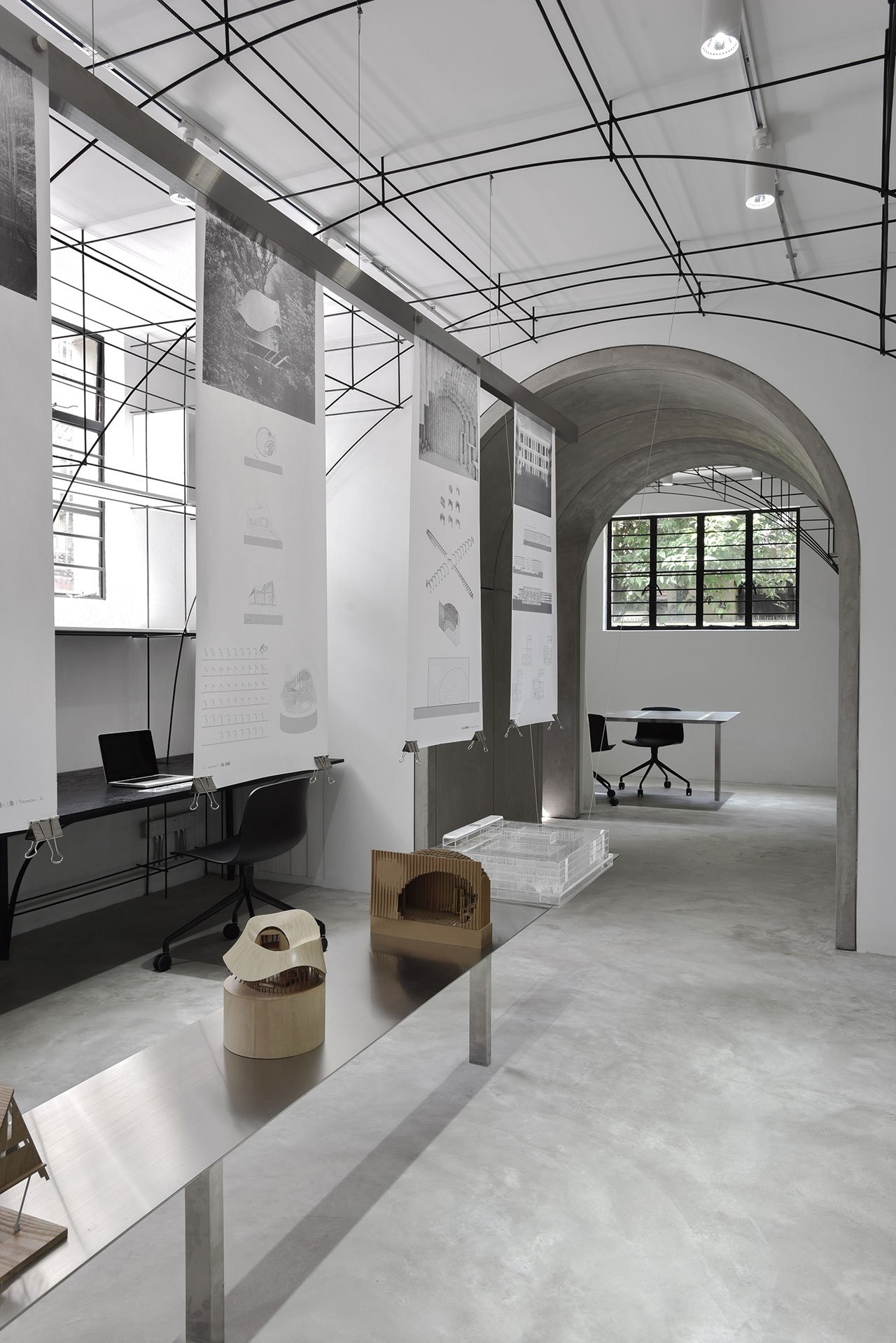
The main office area and the exhibition table. Photo by Song Xiaodan.
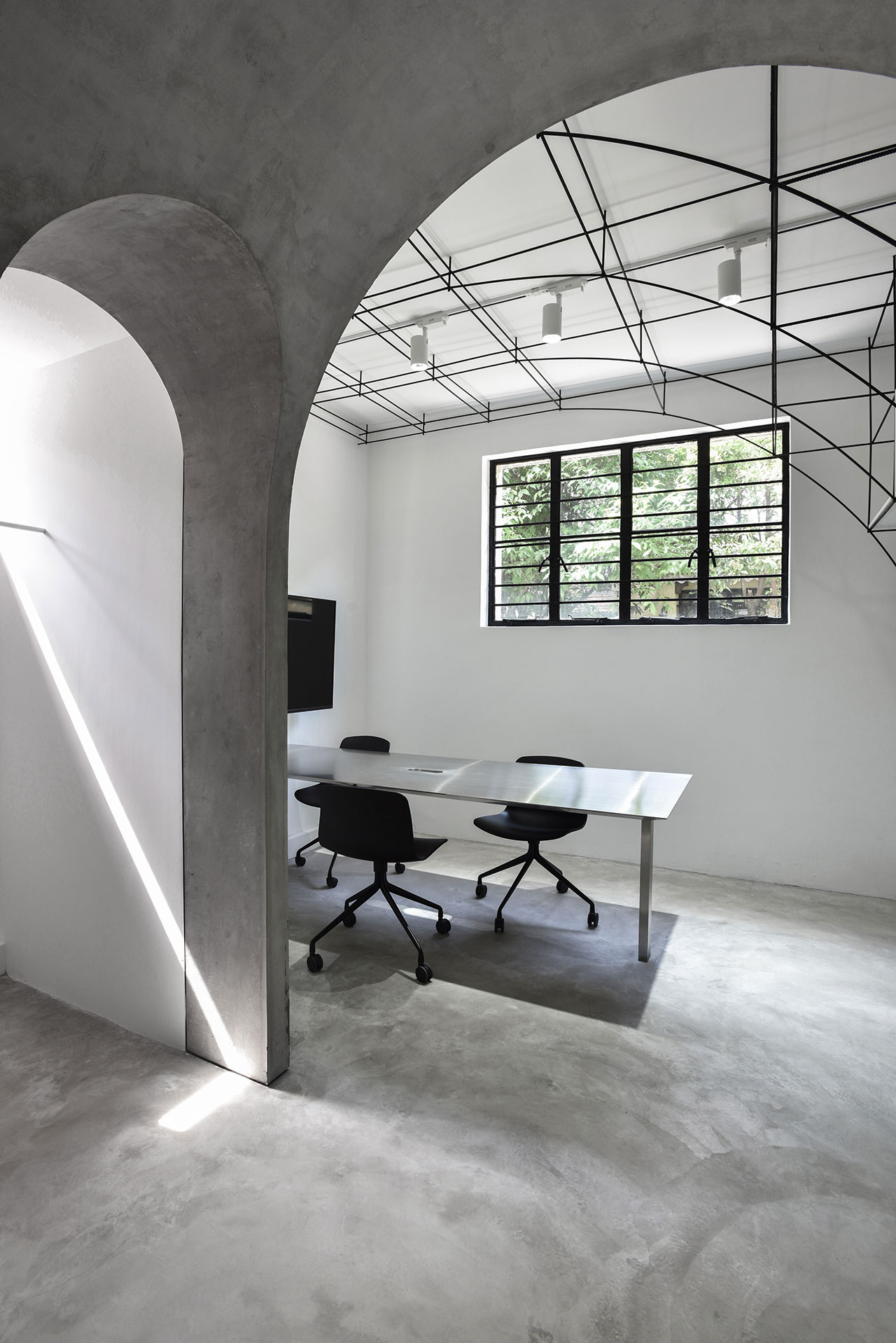
The arched door towards the cloakroom. Photo by Song Xiaodan.

Detail of the archway. Photo by Song Xiaodan.
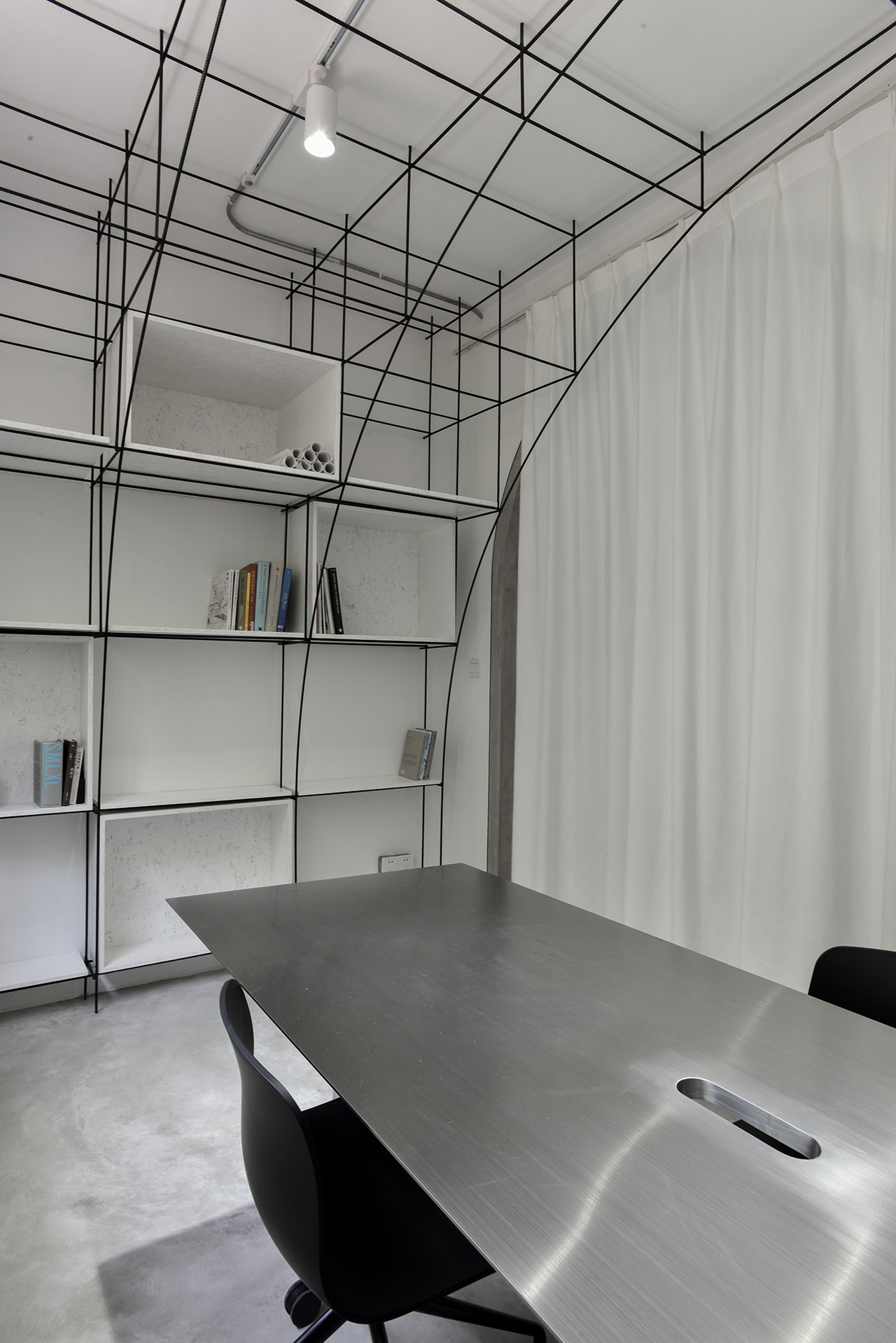
The meeting room. Photo by Song Xiaodan.
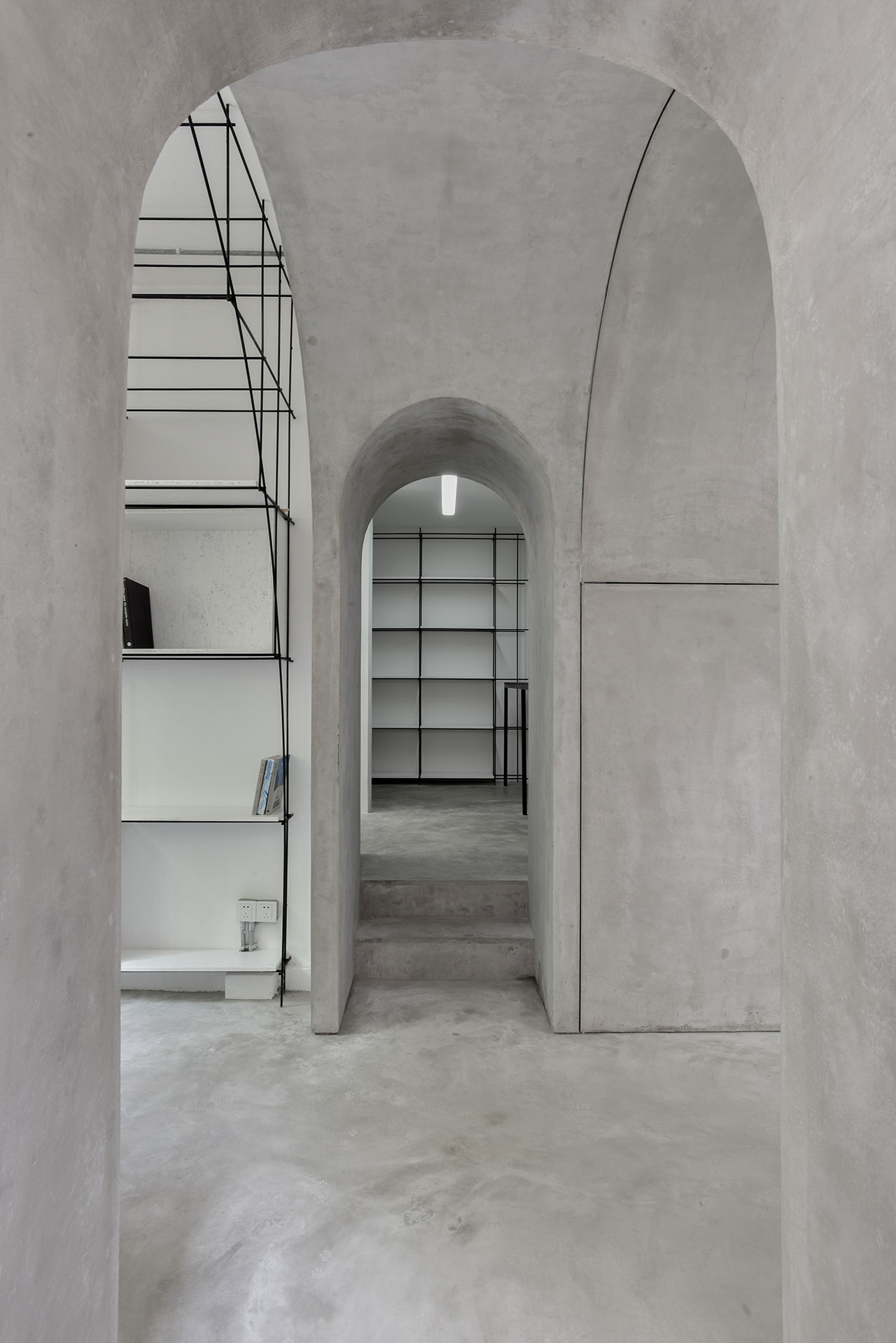
The axis of the arched door. Photo by Song Xiaodan.
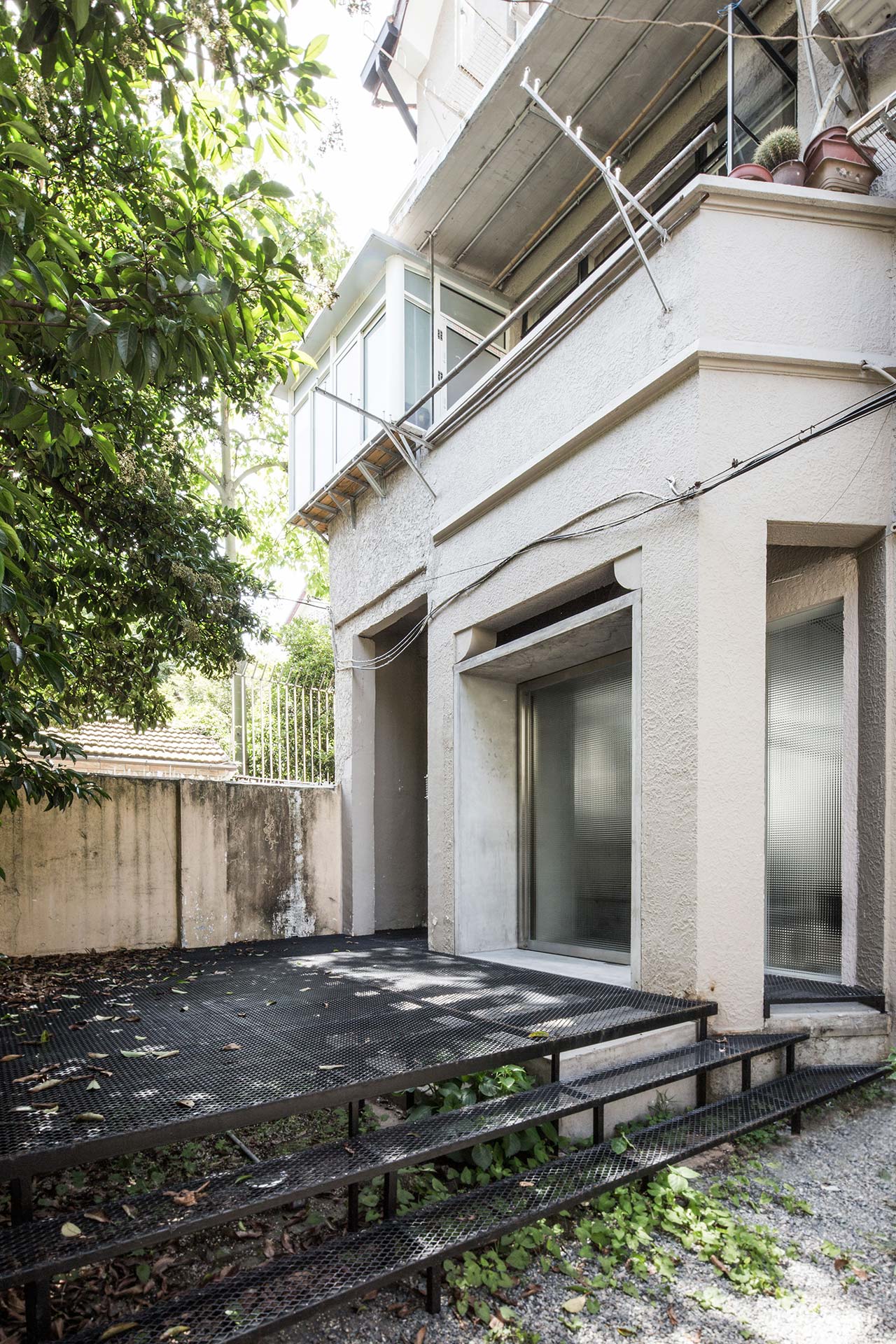
The yard after renovation. Photo by Qiu Ripei.

Revolving glass door at night. Photo by Qiu Ripei.


